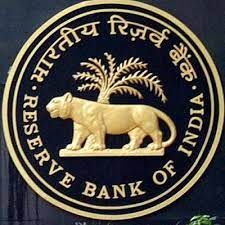CURRENT AFFAIRS
Get the most updated and recent current affair content on Padhaikaro.com
Financial Inclusion Index- 2021
- Vaid's ICS, Lucknow
- 22, Sep 2021

Why in News?
Recently, the Reserve Bank of India (RBI) has unveiled the first composite Financial Inclusion Index (FI-Index).
- The annual FI-Indexfor the financial year ended March 2021 crossed the halfway mark to 53.9, as compared to 43.4 for the year ended March 2017.
Key Points
The index has been conceptualised as a comprehensive index incorporating details of banking, investments, insurance, postal as well as the pension sector in consultation with the government and respective sectoral regulators.
- It will be published annually in July every year.
- It has been constructed without any ‘base year’and as such it reflects cumulative efforts of all stakeholders over the years towards financial inclusion.
Aim:
To capture the extent of financial inclusion across the country.
Parameters:
- Itcaptures information on various aspects of financial inclusion in a single value ranging between 0 and 100, where 0 represents complete financial exclusion and 100 indicates full financial inclusion.
- It comprises three broad parameters (weights indicated in brackets), Access (35%), Usage (45%), and Quality (20%)with each of these consisting of various dimensions, which are computed based on a number of indicators.
- The index is responsive to ease of access, availability and usage of services, and quality of servicesfor all 97 indicators.
Importance of FI Index:
- Measures Level of Inclusion:It provides information on the level of financial inclusion and measures financial services for use in internal policy making.
- Development Indicators:It can be used directly as a composite measure in development indicators.
- Fulfill the G20 Indicators:It enables fulfilment of G20 Financial Inclusion Indicators
- The G20 indicatorsassess the state of financial inclusion and digital financial services, nationally and globally.
- Facilitate Researchers:It also facilitates researchers to study the impact of financial inclusion and other macroeconomic variables.
Related Initiatives:
Pradhan Mantri Jan Dhan Yojana:
It was announced in August 2014, which proved to be a steady vehicle for financial inclusion.
- Till now nearly 43 crore poor beneficiaries in the countrynow have a basic bank account under the yojana.
Digital Identity (Aadhaar):
It has catalyzed inclusion and innovation in the delivery of financial services.
National Centre for Financial Education (NCFE):
- The RBI has released the (NCFE): 2020-2025 documentfor creating a financially aware and empowered India.
Centre for Financial Literacy (CFL) Project:
- The CFL project has beenconceptualised by the RBI in 2017 as an innovative and participatory approach to financial literacy at the Block level involving select banks and non-governmental organisations (NGOs).
- Initially set up in 100 blocks on a pilot basis,the project is now being scaled up across the country to every block in a phased manner by March 2024.
Facts for Prelims:
ANZUS
- The Australia, New Zealand, United States Security Treaty(ANZUS or ANZUS Treaty) is the 1951 collective security non-binding agreement between Australia and New Zealand and, separately, Australia and the United States, to co-operate on military matters in the Pacific Ocean region, although today the treaty is taken to relate to conflicts worldwide.
- It provides that an armed attack on any of the three parties would be dangerous to the others, and that each should act to meet the common threat.
- It set up a committee of foreign ministers that can meet for consultation.